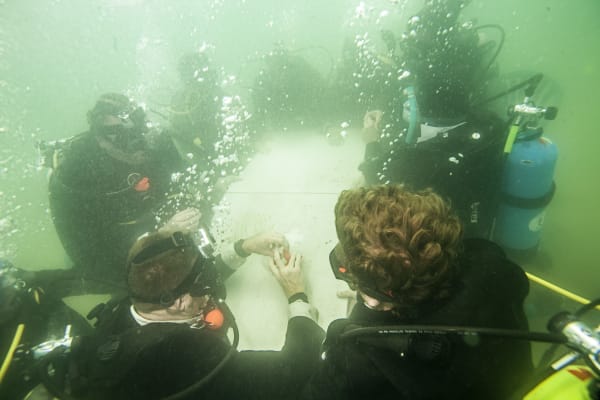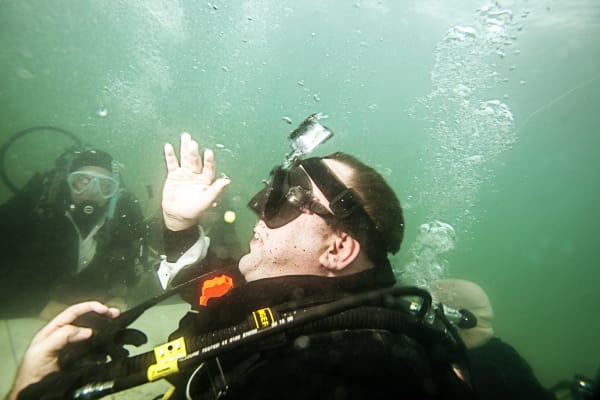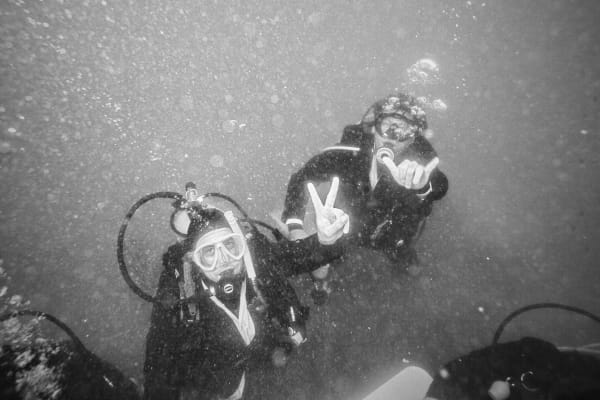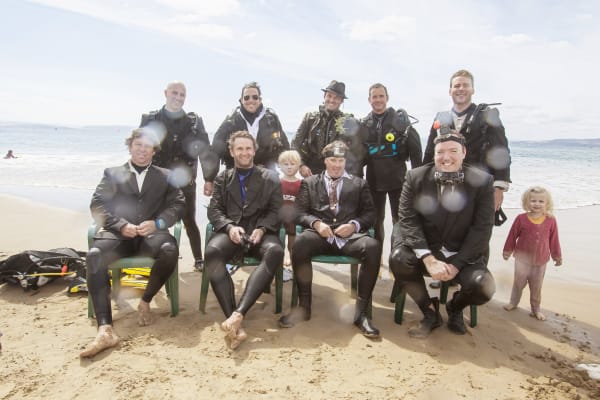The 15-foot half-cab battles its way across Storm Bay. A 30-knot tail wind and menacing swell wrestle for control of the 70 horsepower outboard. As the vessel belly-flops off the white-crests, cold spray drenches my last patch of dry clothing.
An old friend, Scott Edwards, is at the helm. As he guns to the apex of another wave he gives me a calm grin. “I love surfing home. You just pick a line and go.”
My returning smile is genuine, if not so calm.
To starboard, the sea pounds against the crags and cliffs of the Tasman Peninsula. They loom immovable and stoic, sentries to coves of amber sanctuary. Beyond, sage-green hills of eucalypt forest are partly obscured by a rain-mist that merges into an ivory sky.

The scene is damp and verdurous, but such conditions can lead to disaster. Such was the case in late 2012, when above-average rainfall led to high fuel loads. The torrid, windy summer that followed created the perfect fire-storm, a terrible blaze that roared south from the Woodvine Nature Reserve, devouring forest and homes, and reached an angry climax on January 4, 2013, as temperatures reached 41.8 degrees, the hottest Tasmanian day since records began in 1882.
On that day the 300-odd residents of Dunalley found asylum in the local hotel on the south side of the Denison Canal – a discouragingly narrow, man-made waterway that separates the Forestier and Tasman peninsulas from the Tasmanian mainland – and, on that day the oncoming flames. On the canal’s iron swing bridge, vehicles flashed blue and red in a dubious display of security.
The Dunalley Hotel has been here longer than the canal. Its current iteration was built in 1892, a year after the original, 1866 building was burnt down. This picturesque federation building looks no more inflammable, with its decorative kindling fretwork, verandah balustrade and timber dormas. The brickwork looks solid enough, however, and surely the beer served by publican Bill Kidd on that day, helped in the illusion of refuge, as a tsunami of fire crested over the northern hills.
It’s hard for us who weren’t there to picture that scene of grey and orange closeness, nor the maelstrom that surely descended with the surrealism of a Hollywood calamity.

We’ve seen the aftermath of charred chimneys and ruin; seen the pictures of a family huddled beneath a jetty, sipping air from a thin stratum between water and smoke; heard stories of buildings spontaneously combusting from the radiant heat.
When the fire finally released Dunalley the town had lost 65 properties, including the primary school, the bakery, and the police station. But Bill Kidd’s grand old lady, and her nervous occupants, survived.
Expressions of sympathy came from near and far. The events cut into the consciousness of such busy people as the Pope and Queen Elizabeth, both of whom sent supporting messages.
While sympathy can be warming, it doesn’t build houses. The lion’s share of cold hard cash came from everyday people. Donation jars on the counters of cafes, bars, and pet stores quickly filled the coffers of a fund managed by the Red Cross.
There were benefit concerts, charity soirees, art auctions, union barbeques and gala benefits – and an underwater banquet organised by the Cremorne Scuba Dining Club.

Not your common fare.
To the best of my recollection, the idea of a subaqueous dining experience had first been floated at a post-dive barbeque, while de-lipping abalone. At the time, I had joined in the joke of making plans for a venue, menu, and dress code before the discussion degenerated into such impractical ideas as chandeliers fixed to the underside of boat hulls, and string quartets.
Some weeks later Scott Edwards called to ask, seriously, for help working out the logistics of weighting furniture to the sea bed off Cremorne Beach. A tank of air, half a dozen breeze blocks and a few beers later he was satisfied with the venue.
Within a week, there was interest from would-be aquatic-epicureans, and our briny reservation was confirmed for February 11, 2013. We would be a table of nine.
It was one of those calm Tasmanian summer mornings, where time slows to silence, and the world becomes a cool breeze and a haze of contentment. The aqua-gastronomes arrived in waves, each lugging scuba equipment, smiles and quips. We corralled on the beach, joking about the events to come, and suiting up. A strict dress code was adhered to: oversized, St Vinny suits were wrestled over tanks, buoyancy control vests and regulators; ties were adjusted; fedoras and corsages were secured.

The cumbersome diners waddled into the water, like untidy penguins, and disappeared with a lazy splash of flippers and a boiling of expressed air. The dining room was green silence, broken only by the sigh and gurgle of bubbles and my own Darth Vader breath in my ears. Hair rustled in slow motion, and my fedora floated two centimetres above my head on its elastic strap.
We found neutral buoyancy around the table and brushed free a layer of sand that had covered the plastic surface.
Dinner was served.
Eating while breathing from a plastic tube doesn’t lend itself to haute cuisine. Co-ordinating chewing, breathing and swallowing is quite challenging. It’s also difficult to add salt. Main course was cocktail sausages with cherry tomatoes and grapes. Dessert was Lindt chocolate balls. The dessert lingered in a salty chocolate infusion that gummed up my regulator. I could still taste salted chocolate when I was tossed a slow-motion stubby of Cascade Draught.

If eating had been difficult, drinking beer underwater was more so. On my first swig, no beer came out. After a silent charade confab, we deciphered the quirk of viscosity. By blowing bubbles into the bottle the beer’s tension was broken, and cold salty, beer – with the chocolate undertones – emerged. It was not the best pairing, to be honest.
Table talk was understandably minimal, but there was laughter in the eyes behind the cloudy masks.
At one point an impromptu arm wrestle broke out. The victor’s triumph was audible as a muffled bubbling yell.
The patrons were in no hurry to fill their buoyancy vests and return to that perfect summer’s day.
The event was re-enacted in 2015, with a few new faces, more flamboyant hats, more creative food, and the addition of a post-diner poker game on a table blazoned with new sponsorship. The method of arrival had been upgraded to a pair of late-model speed boats. The event raised three times that of the inaugural event. In the absence of significant local fire tragedies, on this occasion the funds went to Beyond Blue.

Back in the present, as we move from Storm Bay into the calmer waters of Frederick Henry Bay, the conversation has turned to the next scuba dine. With Beyond Blue secured as the beneficiary for the foreseeable future, Edwards is keen to continue the event’s growth in patronage, funds, and dining ambience. He has spruiked the event on local radio, and is hopeful for a larger groups of diners. Importantly, there’s talk of including a waiter and crystal glassware. Who knows, maybe we will get those boat-hull chandeliers some day.
We even have a motto: clearer, deeper, hungrier.
Scott Edwards ups the throttle and we bounce through the settling sea, not far from the site of that first scuba dine. “Next time,” he says, “we need music.”

Jonno Blood has been chased by angry gypsies in Hungary, arrested by soldiers in the Ukraine, and slept in a three-metre wide bed with a Red Yao chieftain and his five wives in China. He has also lived in London and Melbourne, before easing back into life in his native Tasmania. While still scratching itchy feet often, he loves his island digs, its often hidden stories, and the characters and capers that make it lavishly singular.







